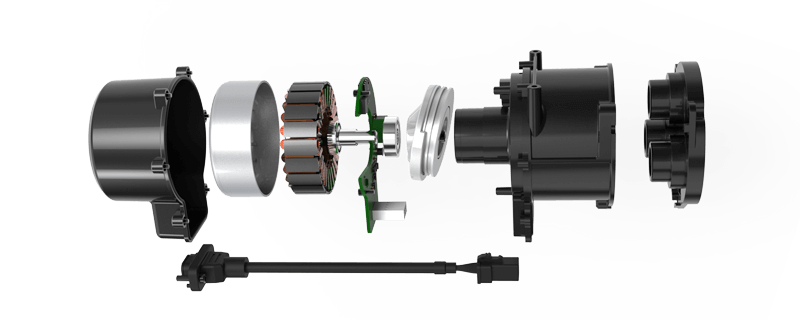The Heartbeat of Motion: Understanding Gears in Motor Vehicles
Imagine cruising down an open highway, the wind whispering past your window, engine humming steadily beneath you. As you accelerate or decelerate, you're interacting with one of the most intricate yet familiar components of your vehicle: the gear system. Gears are more than mere cogs turning in a machine; they are the silent architects of motion, precision, and efficiency in every motor vehicle.

The Evolution of Gears: From Ancient Innovations to Modern Mechanics Gears have been around for thousands of years, dating back to ancient civilizations like the Greeks and Romans, who used simple gear mechanisms to automate machinery. But it wasn’t until the advent of the Industrial Revolution that gears found their vital role in transportation. Early steam engines and horse-drawn carriages incorporated gear systems to control speed and torque, setting the foundation for modern automotive engineering.
Why Gears Matter in Motor Vehicles In a car, gears serve as the bridge between the engine and the wheels, translating power into motion. The engine produces rotational force—known as torque—at a high speed, but wheels require a different speed and torque combination to move efficiently. Gears allow us to manipulate this relationship, providing the driver with control over acceleration, fuel efficiency, and handling.
For example, when climbing a hill, selecting a lower gear multiplies torque, giving the vehicle the power it needs to ascend without straining the engine. Conversely, at cruising speeds, higher gears reduce engine strain and improve fuel economy. The ability to shift gears seamlessly can transform your driving experience, making it smoother, more responsive, and more efficient.
How Gears Work: The Mechanics Inside At their core, gears are toothed wheels that mesh with one another to transmit torque and rotation. The basic principle is simple: rotating a smaller gear (pinion) turns a larger gear (gear wheel), or vice versa, changing the speed and power output in the process. The ratio—known as the gear ratio—determines whether the vehicle accelerates quickly or conserves fuel during highway cruising.
Think of gears as part of a carefully choreographed dance, where each gear change is a step that optimizes performance. The gear system inside a vehicle comprises several components, including gear shafts, synchronizers, clutches, and gear selectors—all working in harmony to deliver the desired outcome.
Types of Gear Systems in Vehicles Motor vehicles utilize various gear configurations depending on their design and purpose. The most common are:
Manual Transmission (MT): Often called "stick-shift," this system requires the driver to manually engage and disengage gears via a clutch pedal and gear lever. It offers direct control and is favored for its engaging driving experience and efficiency.
Automatic Transmission (AT): This system automatically changes gears based on speed and load, using a complex set of sensors and hydraulic or electronic controls. It provides ease of driving, especially in city traffic.
Continuously Variable Transmission (CVT): Unlike traditional gearboxes with fixed ratios, CVTs use a system of pulleys and belts to provide a seamless spectrum of gear ratios, resulting in smooth acceleration and better fuel efficiency.
Dual-Clutch Transmission (DCT): Combining aspects of manual and automatic systems, DCTs use two clutches to pre-select gears, allowing rapid and smooth gear changes—ideal for sporty driving.
The Human Element: Driver Control and Convenience While automatic transmissions dominate urban driving, manual gearboxes are appreciated by enthusiasts for the sense of connection they provide. Shifting gears allows drivers to control engine behavior precisely, enhancing performance in challenging conditions like steep inclines or off-road terrain.
Moreover, advancements in gear technology continue to evolve, with features like adaptive shift logic, paddle shifters, and integrated start-stop systems making driving smarter and more energy-efficient. As automotive technology advances, so does the complexity and sophistication of gear systems, reflecting mankind’s enduring pursuit of perfect control.
Gears and Fuel Efficiency: The Connection Modern gear systems aren’t just about power—they’re vital in conserving energy. Proper gear selection reduces engine load, cuts fuel consumption, and minimises emissions. Hybrid vehicles, for example, often combine multiple gear systems or variable gear ratios to optimize electric and combustion engine performance, pushing toward greener mobility.
The Future of Gears in Vehicles Electrification and autonomous driving are reshaping the landscape of motor vehicles. Electric motors often have a broader torque range and don’t need traditional multi-speed gearboxes, simplifying design and maintenance. However, high-performance and hybrid vehicles still rely heavily on advanced gear systems to maximize power delivery.
Additionally, innovations like robotic gear shifting, smart gearboxes controlled by artificial intelligence, and gearless drives are on the horizon, promising smoother rides and greater efficiency.
Established in 2005, Kpower has been dedicated to a professional compact motion unit manufacturer, headquartered in Dongguan, Guangdong Province, China.




































